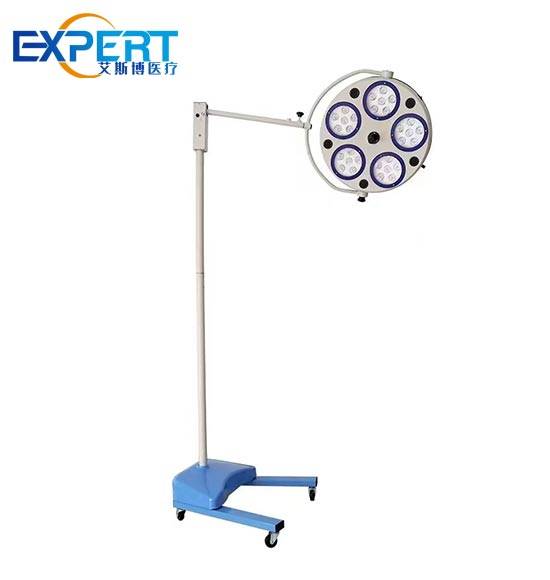Die Anschrift
304 Nordkardinal St.
Dorchester Center, MA 02124
Arbeitsstunden
Montag bis Freitag: 7:00 - 19:00
Wochenende: 10:00 - 17:00
Die Anschrift
304 Nordkardinal St.
Dorchester Center, MA 02124
Arbeitsstunden
Montag bis Freitag: 7:00 - 19:00
Wochenende: 10:00 - 17:00

Die Wahl der richtigen chirurgischen Untersuchungsleuchte ist entscheidend für die Gewährleistung optimaler Sicht, Präzision und Sicherheit bei medizinischen Eingriffen.
Choosing the right surgical exam light is crucial for ensuring optimal visibility, precision, and safety during medical procedures. With various options available, selecting the best surgical exam light can be a daunting task. This comprehensive guide will help you compare different types of surgical exam lights, understand their features, and make an informed decision that suits your clinic’s needs.

A surgical exam light is a specialized lighting device used in medical settings to provide bright, focused illumination for examinations and surgical procedures. These lights are designed to minimize shadows and enhance visibility, ensuring that medical professionals can perform their tasks with precision and accuracy.
There are several types of surgical exam lights, each designed for specific applications and settings. The most common types include:
| Typ | Vorteile | Nachteile |
|---|---|---|
| LED Surgical Exam Lights | Energy-efficient, long lifespan, cool light | Höhere Anschaffungskosten |
| Halogen Surgical Exam Lights | Bright, white light, affordable | Generates heat, shorter lifespan |
| Fluorescent Surgical Exam Lights | Broad-spectrum light | Less energy-efficient, may flicker |
The intensity of the light is crucial for ensuring clear visibility during procedures. Surgical exam lights should offer adjustable light intensity to accommodate different types of examinations and surgeries.
Modern surgical exam lights come with various control mechanisms, such as touch panels, remote controls, and foot pedals, allowing for easy adjustment of light intensity and focus.
Color temperature, measured in Kelvin (K), affects the quality and perception of the light. Surgical exam lights typically range from 3,000K (warm) to 6,500K (cool), with cooler temperatures providing better contrast and detail.
The right color temperature ensures that tissues and anatomical structures are seen in their true colors, aiding in accurate diagnosis and treatment.
Shadows can obstruct the view and hinder the accuracy of medical procedures. Surgical exam lights are designed to minimize shadows and provide consistent illumination.
Modern surgical exam lights use techniques like multi-reflector systems and overlapping light beams to minimize shadows and provide even lighting.
Energy-efficient surgical exam lights reduce operational costs and have a lower environmental impact. LED lights are particularly known for their energy efficiency.
The lifespan of the light source affects maintenance and replacement costs. LED lights have the longest lifespan, followed by fluorescent and halogen lights.

Consider the types of procedures you perform most frequently. Different procedures may require different lighting intensities, color temperatures, and features.
The size and layout of your examination or operating room can influence the type of surgical exam light you need. Ensure the light can adequately cover the entire working area.
Check the light output, usually measured in lumens, and ensure it meets your requirements for brightness and clarity.
The CRI measures how accurately the light source reveals the true colors of objects. A higher CRI is preferable for medical applications.
While LED surgical exam lights may have a higher initial cost, their long lifespan and energy efficiency can result in long-term savings.
Consider the maintenance requirements and ease of replacing light bulbs or components. LED lights require less frequent maintenance compared to halogen and fluorescent lights.
Die Wahl des richtigen OP-Untersuchungsleuchte involves considering factors such as light intensity, color temperature, shadow reduction, energy efficiency, and lifespan. By understanding your specific needs and evaluating the features of different types of surgical exam lights, you can make an informed decision that enhances visibility, precision, and safety in your medical practice.
A surgical exam light is a specialized lighting device used in medical settings to provide bright, focused illumination for examinations and surgical procedures. It enhances visibility and precision by minimizing shadows and providing consistent light.
Color temperature affects the quality and perception of light. Cooler temperatures (around 6,500K) provide better contrast and detail, which is crucial for accurate diagnosis and treatment in medical settings.
LED surgical exam lights offer several advantages, including energy efficiency, long lifespan, minimal heat generation, and adjustable light intensity. They provide bright, consistent illumination and are cost-effective in the long term.
Surgical exam lights reduce shadows using techniques like multi-reflector systems and overlapping light beams. These methods ensure even lighting and minimize shadows, providing clear visibility across the entire field.
When choosing a surgical examination light, consider factors such as light intensity, color temperature, shadow reduction, energy efficiency, lifespan, and the specific needs of your procedures and room layout. Additionally, evaluate the initial cost, long-term savings, and maintenance requirements.
The lifespan of surgical examination lights varies by type. LED lights can last up to 50,000 hours, fluorescent lights around 15,000 hours, and halogen lights approximately 2,000 hours. LED lights offer the longest lifespan and require the least maintenance.
Yes, modern surgical examination lights, especially LED lights, are designed to be energy-efficient. They consume less power, generate minimal heat, and have a lower environmental impact compared to older lighting technologies.
Yes, most surgical examination lights come with adjustable intensity settings. This allows medical professionals to customize the brightness based on the specific needs of different procedures and examinations.
A high Color Rendering Index (CRI) ensures that the light source accurately reveals the true colors of objects. In medical settings, a high CRI (90+) is essential for accurate diagnosis and treatment, as it provides clear and true color representation of tissues and anatomical structures.
The maintenance frequency depends on the type of light. LED lights require minimal maintenance and have a long lifespan. Halogen and fluorescent lights may need more regular maintenance and bulb replacements. Follow the manufacturer’s recommendations for optimal performance and longevity.